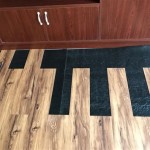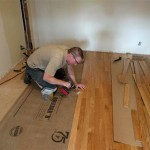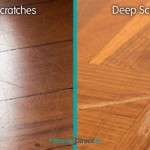Best Flooring Options for a Bunny Cage
Selecting the optimal flooring for a bunny cage is a crucial aspect of responsible rabbit ownership. The cage floor directly impacts a rabbit's comfort, hygiene, and overall health. An inappropriate flooring choice can lead to various problems, ranging from foot sores (sore hocks) to respiratory issues. Therefore, carefully considering the characteristics of different flooring materials is essential before making a decision.
Several factors must be taken into account when evaluating potential flooring options. These include the material's absorbency, ease of cleaning, durability, safety for rabbits to ingest (accidentally), and the overall cost involved. A flooring material that excels in one area may fall short in another. Thus, a balance must be struck to ensure both the rabbit's well-being and the owner's convenience.
Absorbency and Odor Control
One of the primary functions of bunny cage flooring is to absorb urine and control odor. Rabbits are naturally quite clean animals, typically designating a specific area of their cage for urination and defecation. However, their urine can be pungent, and inadequate absorption can quickly lead to unpleasant smells and an unsanitary environment. Materials that readily soak up liquid and effectively trap odors are therefore highly desirable.
Newspaper, while readily available and inexpensive, is not the most absorbent option. It can quickly become saturated and release a strong ammonia odor. Fleece liners, on the other hand, offer good absorbency when paired with an absorbent layer underneath, such as U-Haul blankets or puppy pads. The fleece wicks away moisture from the surface, keeping the rabbit relatively dry. Other options such as wood pellets, paper-based litters and hemp bedding are also popular for their high absorbency. The frequency of cleaning will still be a significant factor in controlling odors, regardless of the material's inherent absorbency.
Furthermore, some materials contain odor-masking agents or natural compounds that help neutralize ammonia. Certain types of wood shavings, for example, may contain cedar or pine oils that offer some degree of odor control. However, it's crucial to ensure that these oils are safe for rabbits, as some can cause respiratory irritation. The ideal choice has high absorbency and helps to minimize unwanted odors, promoting a cleaner and healthier living space for the rabbit.
Safety and Potential Health Hazards
The safety of the flooring material is paramount. Rabbits are prone to chewing and ingesting various items in their environment, including their cage flooring. Therefore, any material used must be non-toxic and pose minimal risk of causing harm if ingested. Sharp or brittle materials should be avoided, as they can cause injury to the rabbit’s mouth, digestive tract, or paws.
Wire-bottom cages, although relatively easy to clean, are generally not recommended as the primary flooring for rabbits. Constant exposure to wire can lead to sore hocks, a painful condition characterized by inflammation and ulceration of the paws. If wire-bottom cages are used, they should be covered with a solid, comfortable surface, such as fleece or a mat, to protect the rabbit’s feet.
Certain types of wood shavings, particularly those derived from cedar or pine, have been linked to respiratory problems in rabbits. The volatile oils present in these woods can irritate the respiratory tract, leading to inflammation and potentially chronic respiratory issues. Therefore, it's generally advisable to avoid using cedar or pine shavings as bedding or flooring for rabbits. Safer alternatives include aspen shavings, paper-based bedding, or fleece liners.
Dust is another critical safety consideration. Dusty flooring materials can irritate a rabbit's respiratory system, predisposing them to respiratory infections. Low-dust options, such as fleece, paper-based litters, or kiln-dried wood pellets, are preferable. Regular cleaning of the cage is also essential to minimize dust accumulation.
Ultimately, ensuring the safety of the flooring material involves carefully evaluating its composition, texture, and potential for causing harm if ingested or inhaled. Selecting non-toxic, low-dust options is crucial for maintaining the rabbit's health and well-being.
Ease of Cleaning and Maintenance
The ease with which the flooring can be cleaned and maintained is a significant consideration for rabbit owners. Rabbit cages require regular cleaning to prevent the build-up of urine, feces, and debris, which can create an unsanitary environment and contribute to odor problems. Flooring materials that are easy to spot-clean and thoroughly sanitize are highly desirable.
Fleece liners, when used in conjunction with an absorbent layer underneath, offer a relatively easy cleaning process. Soiled fleece can be easily removed from the cage and laundered in a washing machine. The absorbent layer underneath can be disposed of or composted, depending on the material used. However, fleece liners require frequent washing to prevent the build-up of ammonia and odors.
Wood pellets and paper-based litters are also relatively easy to clean. Soiled portions of the bedding can be scooped out and discarded, and the remaining bedding can be replaced as needed. These materials are typically biodegradable and can be composted. However, it's important to choose a high-quality product that doesn't produce excessive dust during cleaning.
Hard, non-absorbent surfaces, such as plastic or linoleum, are easy to wipe clean but do not absorb urine or control odors. These surfaces are best used in conjunction with an absorbent bedding material, such as wood pellets or paper-based litter. Regular cleaning is essential to prevent the build-up of urine and feces on the non-absorbent surface.
The specific frequency of cleaning will depend on the type of flooring material used, the size of the cage, and the number of rabbits housed in the cage. However, it's generally recommended to spot-clean the cage daily and perform a thorough cleaning at least once a week. This involves removing all bedding, disinfecting the cage, and replacing the bedding with fresh material.
Types of Flooring Options and Their Properties
The choice of flooring for a rabbit cage extends beyond personal preference and encompasses a comprehensive understanding of different materials. A variety of options exist, each with unique advantages and disadvantages.
Fleece Liners
Fleece liners have become popular due to their soft texture, reusability, and relative ease of cleaning. These liners need to be layered with an absorbent material underneath, such as U-haul blankets, puppy pads or specialized absorbent fabrics. The fleece wicks away moisture, keeping the surface relatively dry for the rabbit. They are machine washable, which facilitates simple cleaning. However, they require regular washing to prevent odor build-up. The initial investment may be higher than some alternatives, but the long-term cost can be lower due to their reusability.
Paper-Based Bedding Pellets
Paper-based bedding pellets are crafted from recycled paper and are well-regarded for their superior absorbency and low dust content. This is an eco-friendly option and provides a good method for managing odors. The pellets expand when wet, which helps to contain urine and reduce splashing. They are also relatively lightweight, making them easy to handle and replace. However, some rabbits may not prefer the texture of the pellets, and they may be a little more expensive than some other bedding options.
Wood Pellets
Wood pellets, particularly those made from kiln-dried pine, offer excellent absorbency and odor control. It's important to ensure that they are kiln-dried to reduce the levels of potentially harmful phenols. When exposed to moisture, the pellets break down into a sawdust-like substance. This can make cleaning a little messier compared to other options. The initial cost is typically low, making it a budget-friendly choice. However, the dust produced upon breakdown might be a concern for rabbits with respiratory sensitivities.
Hemp Bedding
Hemp bedding is derived from the hemp plant and is rapidly becoming a popular choice due to its excellent absorbency, odor control, and low dust content. It is also biodegradable and compostable. It is relatively lightweight and easy to handle. However, hemp bedding can be more expensive than some other options like wood pellets or shavings.
Mats and Carpets
Mats and carpets can provide a comfortable and safe surface for rabbits, particularly in cages with wire bottoms. They provide cushion and prevent sore hocks. They need to be made of materials that are safe for rabbits if ingested. However, these materials can be difficult to clean if they become soiled. It's vital to select materials that are washable and resistant to chewing.
Ultimately, the best flooring for a bunny cage is the one that best meets the individual needs of the rabbit and the owner. Careful consideration of the factors discussed above will help ensure a safe, comfortable, and hygienic environment for the rabbit.

The Best Rabbit Flooring For Cages And Agility

What Is The Best Floor For My Bunny Enclosure Bunnyproof

Recommended Rabbit Enclosures The Bunny Lady

What Is The Best Floor For My Bunny Enclosure

The Best Rabbit Flooring For Cages And Agility

Best Flooring For Outside Runs Rabbits United Forum Outdoor Rabbit Run Dog Kennel

Best Bunny Enclosures Ideas For Pens Cages Ohio Holland Lops

What Can You Line A Rabbit Hutch With Home Roost

Indoor Rabbit Cages The Definitive Guide

Best Bunny Enclosures Ideas For Pens Cages Ohio Holland Lops
Related Posts








